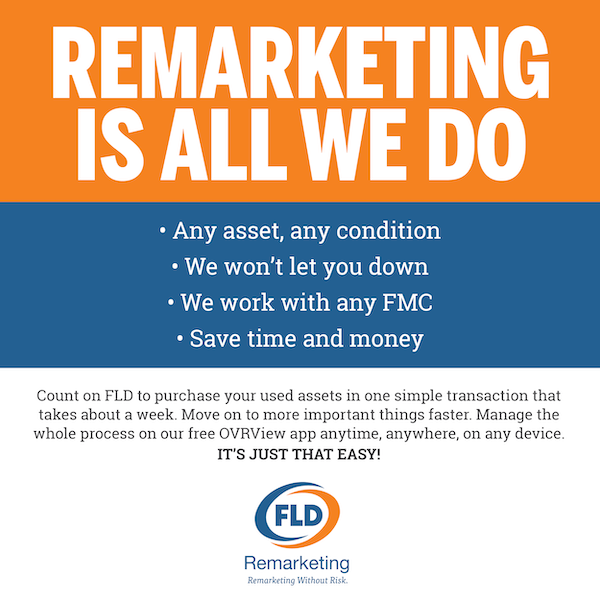
By Ted Roberts, Fleet Management Weekly
August 30, 2023
Article originally published in July 2023 Edition of Fleet Insight, AFLA’s Member Newsletter.
These days we are constantly hearing about EV adoption strategies for fleets, but it’s important to remember that there are other ways — beyond and in addition to electrification – to ‘green’ your fleet.
We’ve asked a number of fleet industry experts on other ways to go about ‘greening’ your fleet, and here is the advice we have gotten:
“While EV implementation is great for ESG goals, there are still certain aspects that need to be considered in the cost of adoption, including vehicle price, charging infrastructure and management, range, and more. Availability remains an issue as well, but there are plenty of green options for fleets that don’t require full EV adoption.”
— Pam Hackett, Account Manager, BBL Fleet
“A few feasible options to green a fleet without EV vehicles include:
Lifecycle Planning – Cycle out less fuel-efficient units for newer ones where possible.
Monitoring Utilization – Optimizing the use of your fleet vehicles can identify underutilized units which can be repurposed in other areas and reduce the number of needed vehicles.
Performing Preventative Maintenance – Regular preventative maintenance like oil changes, tire pressure and breaks effects how much fuel a vehicle uses.
Assessing Driver Behavior – Hard acceleration and breaking along with excessive idling negatively impact emissions. A telematics solution is an effective way to monitor those behaviors.”
— Ted Haynes, Account Manager, BBL Fleet
“Green means keeping your fleet healthy. Typically a healthy fleet means rigorously following recommended service intervals. But it also means high-quality repairs when there’s a mechanical failure or collision repair. High quality repairs will keep vehicles running at peak performance, saving unnecessary gas and controlling harmful emissions.”
— Mark Hodes, Chief Business Officer, ServiceUp
 “It’s common knowledge that EVs still have challenges to overcome before being widely available and sustainable in every market. While electric will eventually be a great option, propane autogas is a stand-out alternative fuel that’s ready now. Propane delivers sizable cost savings and emissions reductions while maintaining power, reliability and longevity. ROUSH CleanTech’s propane engine is 90% cleaner than the strictest EPA standard. And, propane infrastructure is easy to implement, cost-efficient and flexible. It’s an uncomplicated solution with no hidden costs or downsides.”
“It’s common knowledge that EVs still have challenges to overcome before being widely available and sustainable in every market. While electric will eventually be a great option, propane autogas is a stand-out alternative fuel that’s ready now. Propane delivers sizable cost savings and emissions reductions while maintaining power, reliability and longevity. ROUSH CleanTech’s propane engine is 90% cleaner than the strictest EPA standard. And, propane infrastructure is easy to implement, cost-efficient and flexible. It’s an uncomplicated solution with no hidden costs or downsides.”
— Todd Mouw, Executive Vice President, ROUSH CleanTech
“My shorthand for this is ‘getting back to Fleet Management 101.’ Right number of vehicles, right size of vehicles, idle reduction, driver training, and a regular replacement cycle all make a fleet more sustainable without moving to an alternative propulsion system. Use the data at hand to make the most sustainable choices possible.”
— Maria Neve, VP Electrification and Sustainability, Wheels
“Newer assets continue to become ‘greener’ each model year. One of the best ways fleet managers can ‘green’ a fleet is to have an established fleet replacement program based on optimal lifecycles and consistently follow these lifecycles.”
— Steve Saltzgiver, Fleet Success Sr. Advisor, RTA Fleet Management
“Electric is just one type of energy. There are also different fuel types and sourcing, as well as fleet management and telematics that can help you green your fleet.
 Fuel types and sourcing such as compressed natural gas for heavy and medium duty vehicles, and hydrogen for heavy duty vehicles, can be leveraged in the short- to medium-term to lower the carbon footprint of fleets. Potentially in the future, once more research is done, bio-fuels and synthetic fuels could also become options for greening your fleet.
Fuel types and sourcing such as compressed natural gas for heavy and medium duty vehicles, and hydrogen for heavy duty vehicles, can be leveraged in the short- to medium-term to lower the carbon footprint of fleets. Potentially in the future, once more research is done, bio-fuels and synthetic fuels could also become options for greening your fleet.
Fleet management and telematics can also be used to reduce your carbon footprint, and unlike fuel types and sourcing, these are solutions fleet managers can enact now. The approaches that our customers have found successful leveraging our Teletrac Navman solutions include: optimizing fleets through streamlined route planning and efficient delivery planning; preventative maintenance through our maintenance management system; idle time detection and reporting; remote diagnostics capabilities to facilitate faster repairs; and driver monitoring to encourage behaviors that will reduce emissions such as maintaining optimal speeds and reducing fuel consumption. These approaches can create a 20-30% reduction in emissions, while minimizing your fuel costs to create a higher return on investment.”
— Alain Samaha, President, Alternative Energy & Sustainable Fleets, Vontier
“Choice is a pillar of our EcoWheels program – we recognize that full EVs are not the right fit for everyone. We help customers explore alternative powertrains, of course, but also explore concepts like optimizing your upfit, ensuring you have the right vehicle for the job, and that you have the right number of vehicles to run your fleet optimally. Beyond the vehicle itself, we’re also helping clients explore alternate mobility solutions, like ride sharing and pooled vehicles through our pool checkout solution, and offering digital solutions in place of services where we traditionally relied heavily on paper and plastics.”
— Sara Sweeney, Sr. Product Manager, Wheels
Article originally published in July 2023 Edition of Fleet Insight, AFLA’s Member Newsletter.





